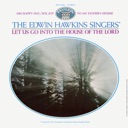Contemporary Gospel
A Night of Inspiration
© Jennifer TaylorKey Attributes of Contemporary Gospel
Select to filter timelineThemes
- Religion/Faith
- Love/Relationships
Musical Features
- Sampling
- Ensemble
- Vocals
- Body Percussion
Instruments
- Other Electronic Instruments
- Voice
- Electric Piano/Synthesizer
When Edwin Hawkins recorded his version of the hymn “Oh, Happy Day” with the Northern California State Youth Choir of the Church of God in Christ in 1968, he ushered in a new era of gospel music. Contemporary gospel (CG) refers to music that references God, faith and salvation, and incorporates the rhythms and instrumentation of secular genres. Contemporary gospel songs often are controversial when they first emerge and their authentic ties to the gospel frequently are questioned.
Context and History
“I think gospel is the only genre of music that can have so many different styles, jazz, rock, R&B, whatever and still maintain the message of Jesus Christ.”Walter HawkinsGospel Musician
Contemporary gospel stands firmly upon the groundwork paved by Hawkins’ approach to the genre as well as upon music from such artists as Andraé Crouch, The Rance Allen Group, Beverly Glenn, and others who incorporated R&B musical elements into their songs beginning in the late 1960s. While some refer to the 21st-century version as urban contemporary gospel, most fans and industry professionals generally call gospel music either traditional or contemporary. Contemporary Gospel can also feature R&B elements, but in every subsequent decade since its beginnings, the genre has embraced the latest urban musical sounds and techniques. The list includes but is not limited to jazz, blues, folk, classical idioms, hip-hop, and trap, genres generally viewed as being outside of the “ritualized” sound many have come to expect from gospel music. Because this Contemporary Gospel generally mirrors the most popular Black music of the period, it can be viewed as the industry side of gospel, for while its words minister to many, the sound allows for airplay on secular stations. For that reason, its artists tend to be among gospel’s most recognized outside of the genre.
Musical Features/Performance Style
“I wasn’t trying to do hip-hop labeled gospel music. I was just doing what was natural to me. When I first started it was rough. A lot of people talked about it wasn’t church music, it wasn’t God’s music...The church wasn’t always accepting.”Kirk FranklinGospel Musician
Music that falls within this category generally does not utilize the sonic elements traditionally associated with the Black church—full-throated vocals often delivered by choirs supported by a Hammond B3 organ and handclapping. What it can include is sampling from other songs, both sacred and secular. For example, Kirk Franklin’s “Stomp,” recorded with God’s Property and rapper Salt, samples George Clinton’s “One Nation Under a Groove, and the instrumentation can include a range of electronic devices, from keyboards to the revolutionary Roland TR-808 drum machine.
The initial choir members who recorded “Oh, Happy Day” wore suits, dresses, and choir robes and could have easily been categorized as traditional singers because of their look. As Hawkins pared down to a smaller group, the attire often aligned more with that worn by R&B singers at that time, including open shirts for the men worn with neck chains. Contemporary gospel artists of the first decades of the 21st century can be seen in casual styles, including ripped jeans and form-fitting tops. On dressier occasions, the men may be found in slim-fit suits, and the women, if they wear dresses, will often pair them with pants or leggings.
“Take 6 is gospel and Take 6 is also jazz.”Jim NelsonMusic Critic
Lyrics
The lyrics of contemporary gospel songs can mirror those found in secular love songs; the difference is that the object of affection is God rather than another human being, as in “Ordinary Just Won’t Do” by Commissioned. But the lyrics can also reference the kinds of topics expected in a gospel song, including salvation, gratitude, faith, hope, and praise as in “Shackles” by Mary Mary, as well as dedication to spreading the gospel such as Lecrae expresses in “Tell the World” featuring Mali Music.
Bibliography
- Smith-Pollard, Deborah. When the Church Becomes Your Party: Contemporary Gospel Music. Detroit: Wayne State University Press, 2008.
- Interview: “Edwin Hawkins: Jesus is what makes it gospel.” AXS Entertainment. September 27, 2014.
- Interview: Exclusive with Kirk Franklin. Adom Praiz, Ghanian TV Talk Show, hosted by Bola Ray. 2013. https://www.youtube.com/watch?v=eWbZmh-bOQ4









